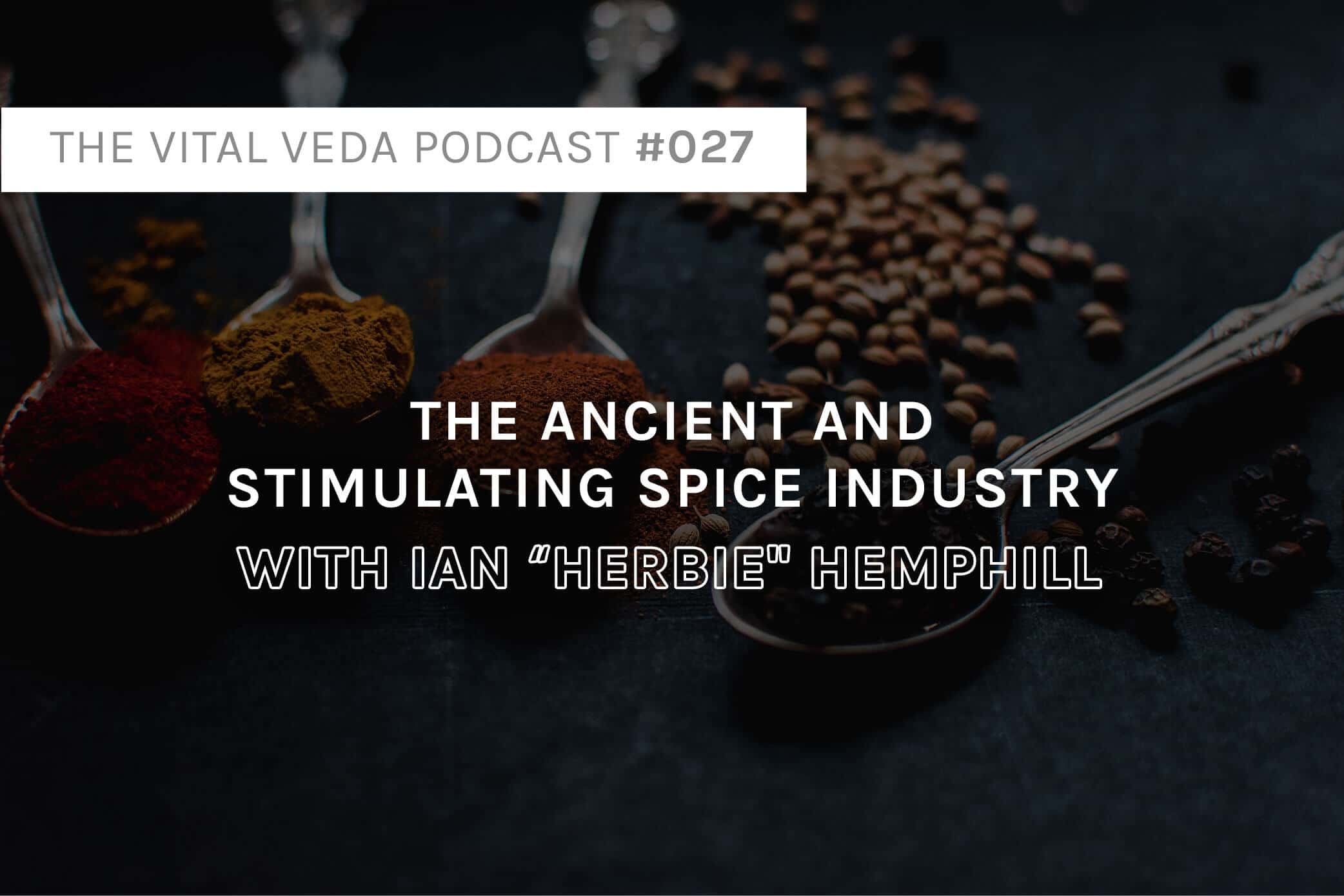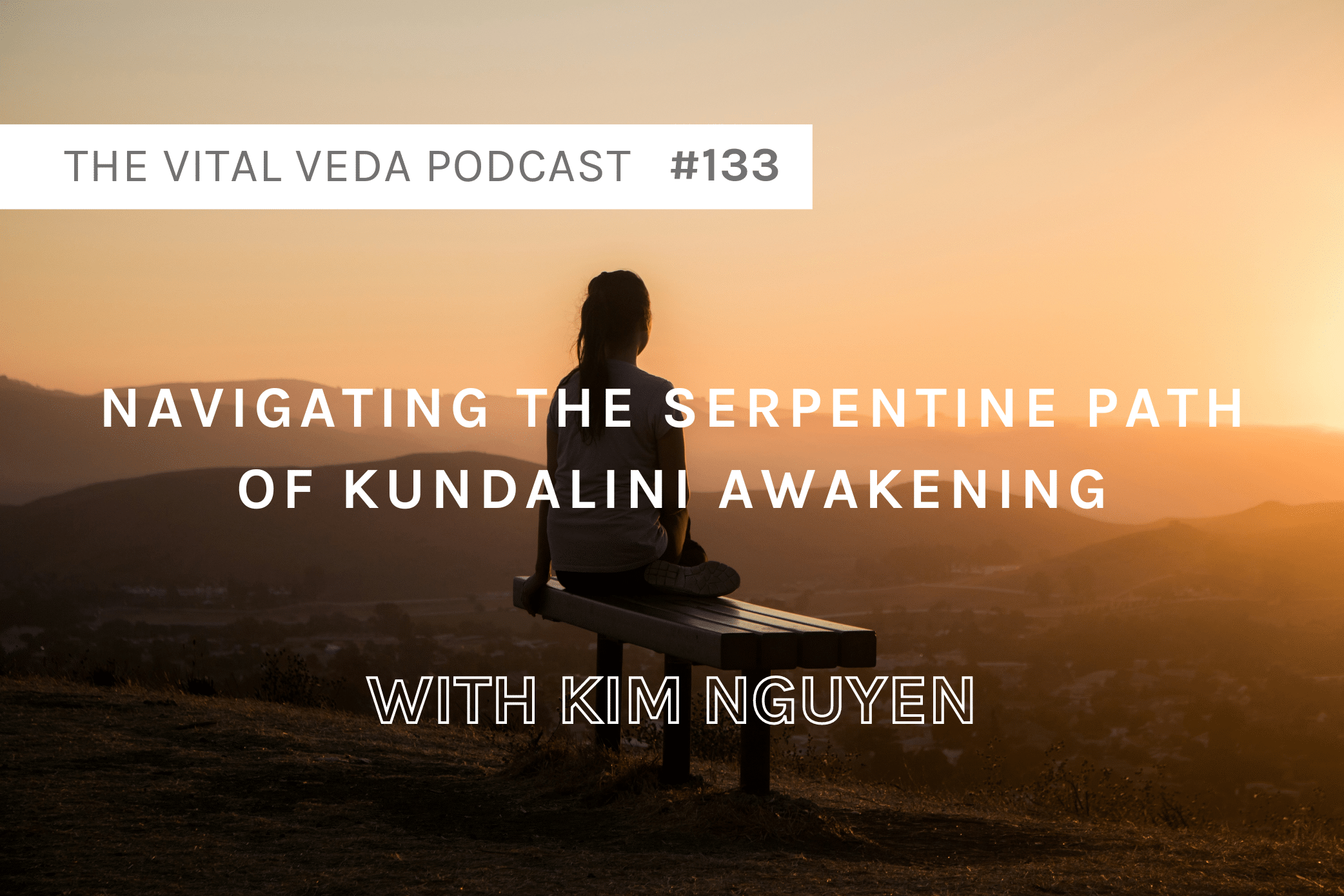ABOUT IAN HERBIE HEMPHILL
Ian ‘Herbie’ Hemphill is an Australian foodie legend. He and his family have been educating us about spices and herbs for over 50 years. 3 Generations of herbs and spice Hemphills.
Ian Hemphill’s lifelong experience in the spice industry means we can gain the “inside story” into the ancient and stimulating spice industry.
Herbies have a product range of over 200 items, including over 100 spice blends, all developed by Herbie and made daily in the Herbie’s Spicery on the Central Coast of New South Wales.
The Hemphill’s hobby is also their passion, their business, and their livelihood.

Ian is the author of books:
- The Spice and Herb Bible.
- “Spice Travels – A Spice merchant’s voyage of discovery” – Ians personal anecdotes and travel stories.
- He runs Herbies TV.
- Spice Notes.
- Herbaceous.
- Spicery.
- Sticks, Seeds, Pods and Leaves.
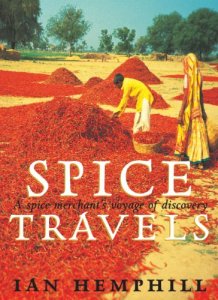
Herbie & Liz wanted to achieve three main objectives for their business:
- To have the largest range of culinary herbs and spices in the Southern Hemisphere;
- To always search for the best quality and make 100% natural blends;
- and very important, was to educate consumers so they could judge for themselves.
IN THIS EPISODE WE DISCUSS
History of the Spice Trade
- The worlds second oldest profession.
- One of the most lucrative businesses.
- It was used as a currency. – Using something with actual value.
- Spices were used as a status symbol.
- Myths of spices about the way they were developed.
- Pepper corn rent – pepper corns were used to pay rent.
- How have we lost our appreciation for this highly valuable commodity? Have we become numb and ignorant to the abundant healing power and importance of spices?
- Mass marketing has reduced spices to commodity status.
- Adulteration means consumers are not exposed to true quality spices.
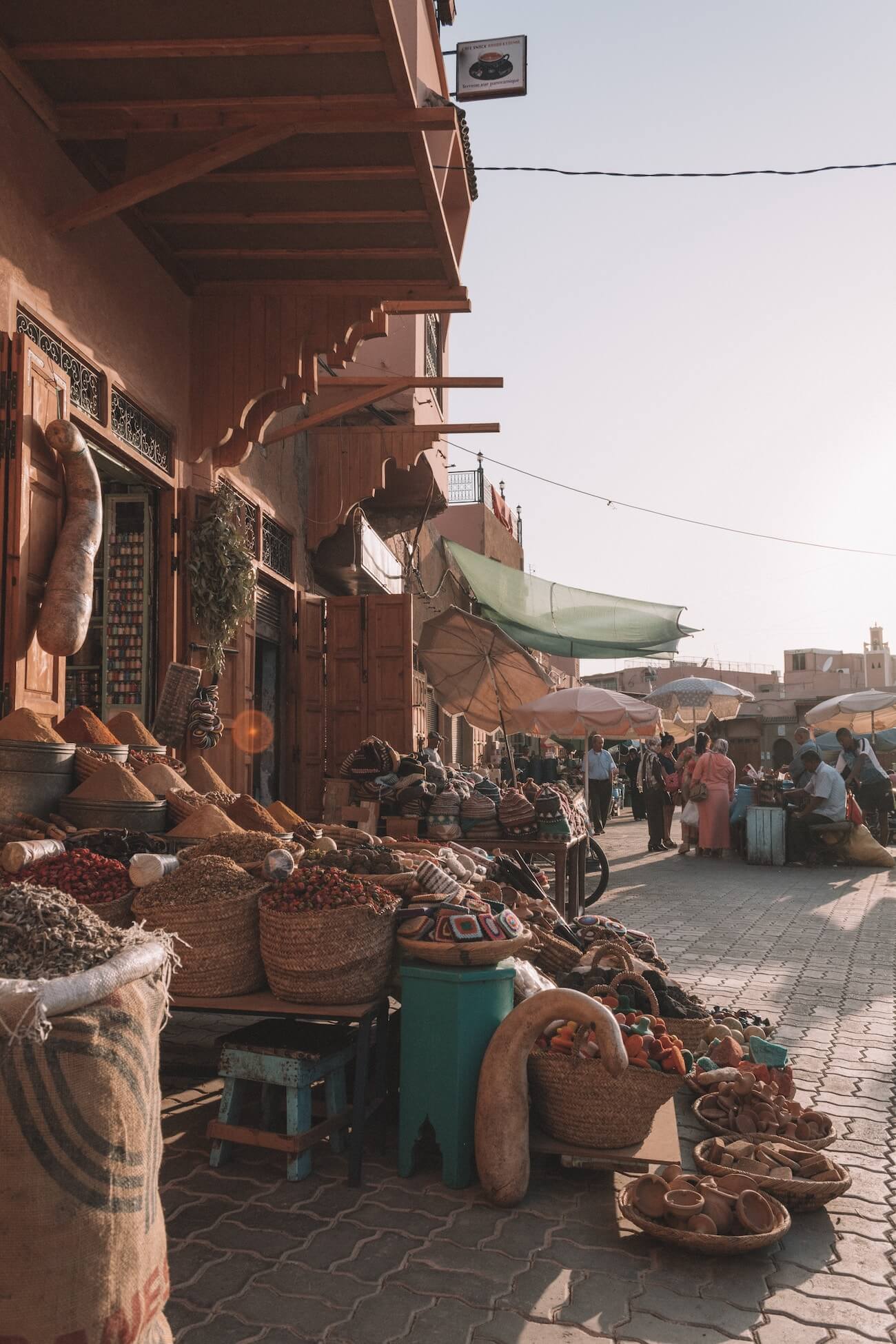
Adulteration and Quality
- Food fraud.
- Buying powdered spices.
- Range of quality and variety of spices. – Depends on climate, place grown.
- How is it packaged/stored? – spices in bulk bins, plastic, paper.
- Herbie’s products contain No Added artificial ingredients or fillers of any kind.
- Herbies grind spices themselves except some chilli and turmeric.
How to become familiar with the spices we are using.
Look and smell the spice each time we use them.
Drying Spices
- To activate the natural enzymes and bring out the flavour.
- The less moisture content of 10-12% of dried herbs compared to over 80% when it is fresh, preserve the herbs while retaining he volatile oils.
- Must dry quickly or else mold can start growing if the moisture lingers during the process. But to fast the heat will destroy the volatile oils and flavours.
Organic vs. Non-organic
Is it so important with spices? How is the pesticide use in the spice industry?
Spices in Agriculture
Mono-culture vs. permaculture?
Tip for Cooking Spices
Don’t pour over steam as steam gets in, allows the volatile oils to oxidise or worse, create mould.
SAFFRON
Medicinal Uses
- Vajikarana – Sukra vardhaka – aphrodisiac that increases reproductive tissue and strength.
- Rakta dhatu (Blood Tissue Health) – Increases haemoglobin thus good for anaemia.
- Heart – enhancing the lymph and blood tissues (rasa and rakta dhatus) encourages blood flow through the circulatory system. Good for angina (inadequate blood supply to the heart) and cardiac congestion.
- Enhances purity as it is very sattvic herb, which enhances love and compassion.
- For mental health and brain health.
- Nervous disorders – rejuvenates majja (bone marrow) and sukra (reproductive) dhatu, thus good for vata and degenerative diseases.
- Skin conditions such as discoloured patches of the face. External applciation.
- Cures headache – topical application.
- Ulcers, worms, vomiting.
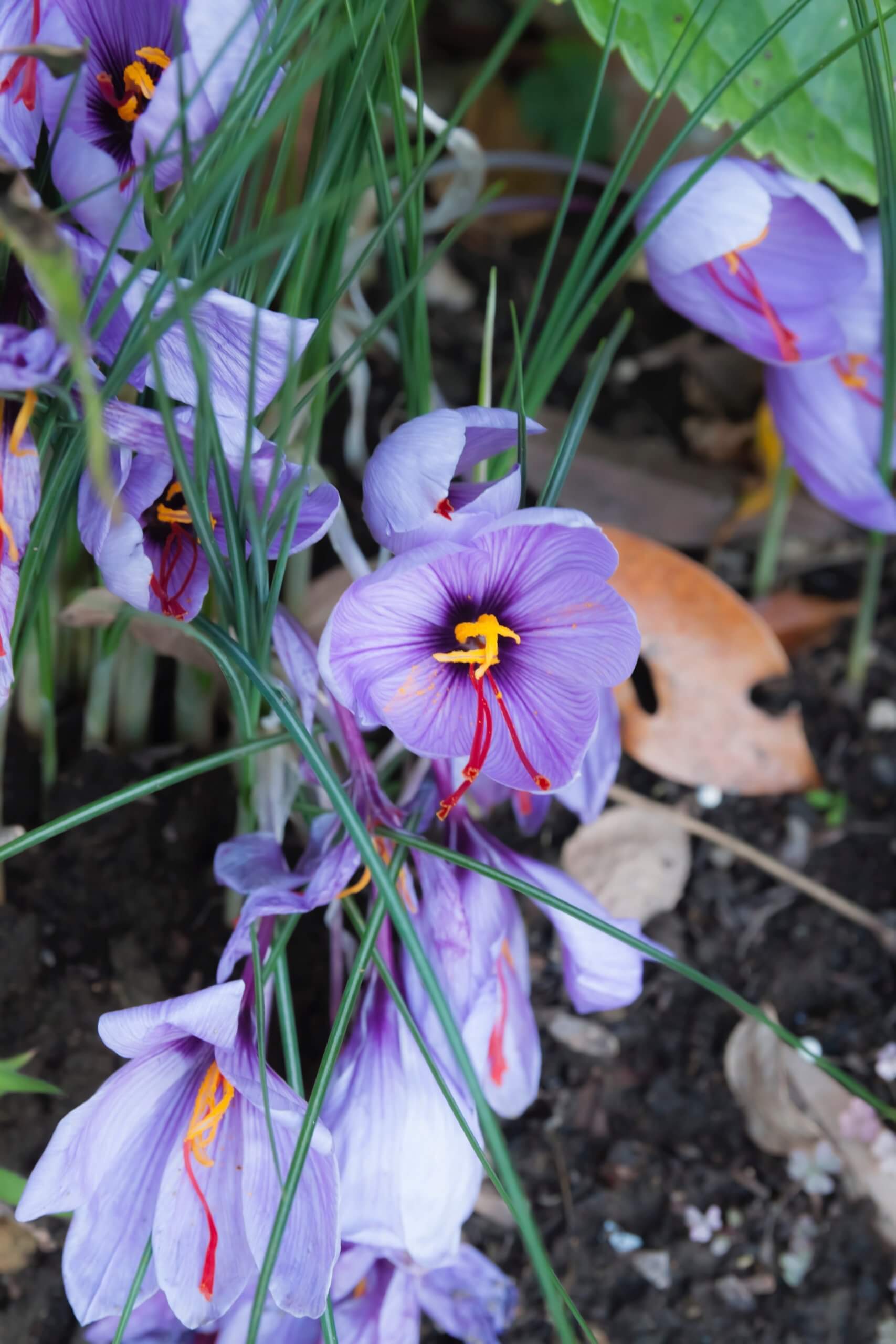
Ayurvedic properties:
- Rasa (taste) – katu, titkta (pungent, bitter)
- Virya (energy) – usna (heating)
- Vipaka (post-digestive effect) – katu (pungent)
- Gunas (Qualities) – snidgha, laghu (unctuousness, light)
- Doshas – Tridoshic. Can heat pitta in excess.
- Karma (Action): Yogavahi (catalyst)
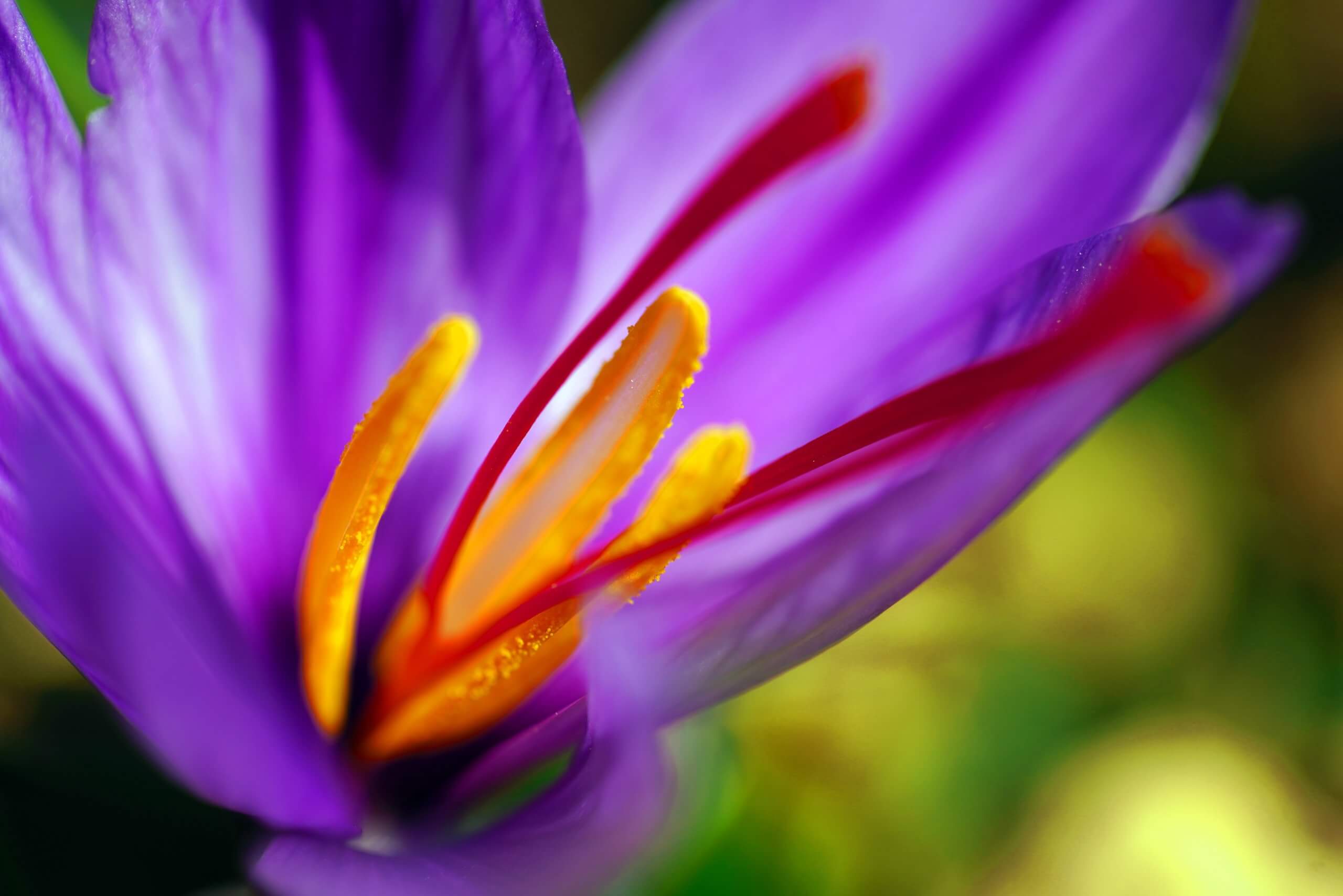
Saffron is the world’s most expensive spice! and most expensive commodity! more expensive than gold!
With a street value on average of around A$20,000 per kilo.
A double handful of saffron weighing about 1 kilo, will contain at least 200,000 stigmas. – the female organ on the flower, held by the male pollen/organ, called the stamen.
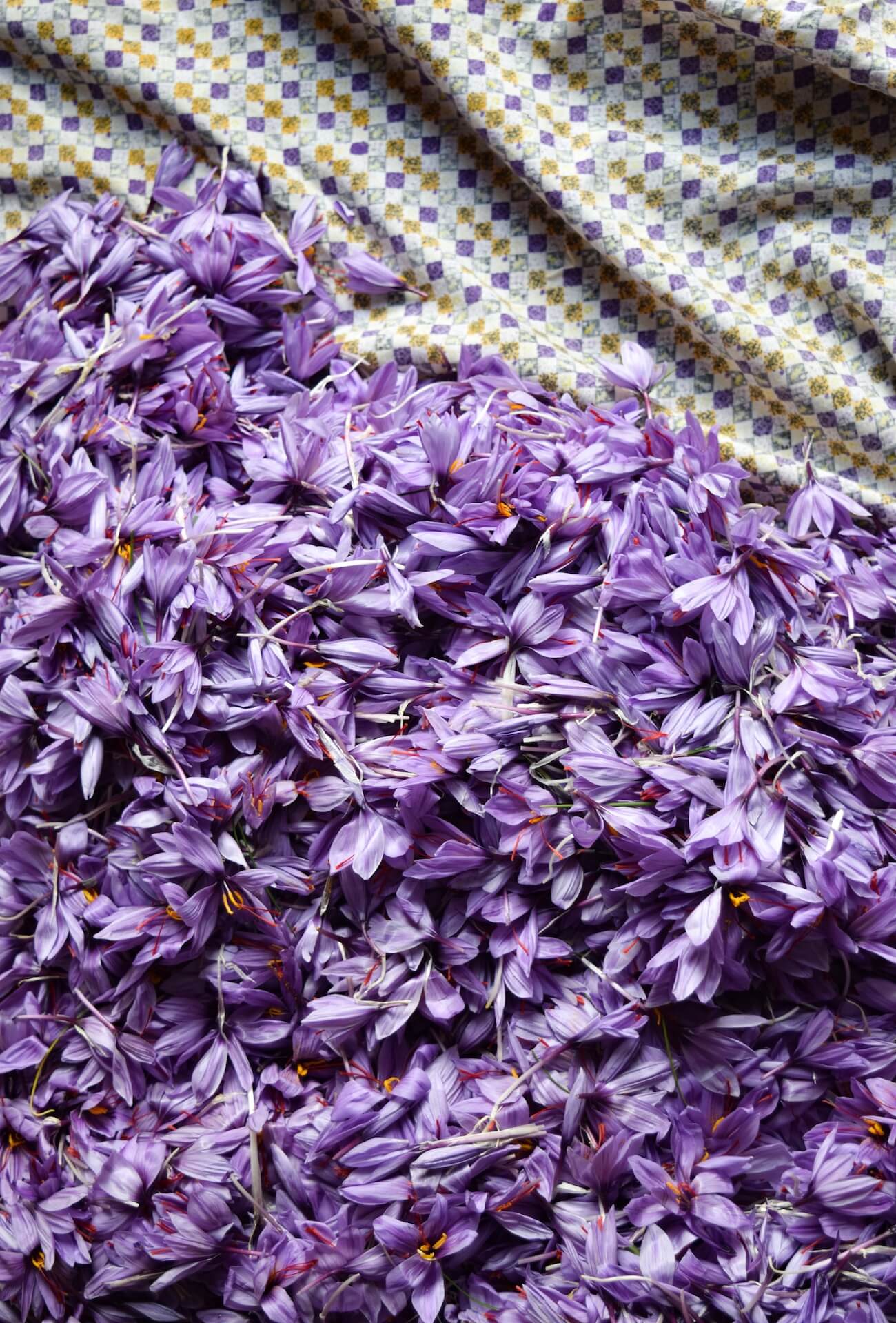
- Hand picked.
- Origin – Kashmir (5%), Iran (over 90% of worlds supply, 360 tones a year!), Spain ( biggest exporter, thus importer).
- Different grades.
- Best quality – Kashmir – is the whole stigma with a little bit of style.
- Medium quality – Iran, afganistan.
- Inferior quality – Persia.
- Amount of land to produce how much stigmas – 5 acres/ kilo of saffron.
- 170,000 flowers = 100kg flowers = 1kg dry saffron.
Herbie at a Kasmir saffron field
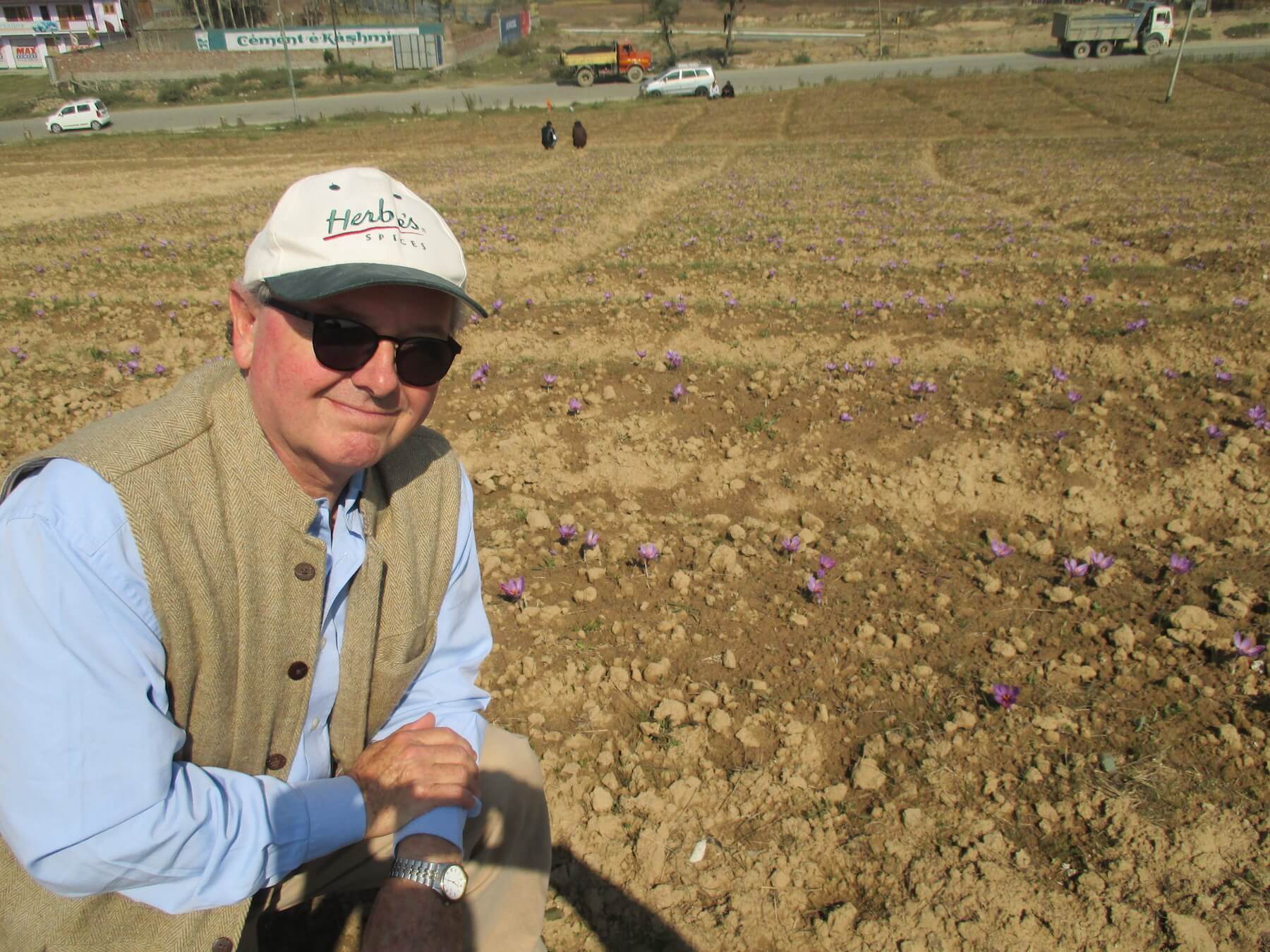
Adulteration
- Safflower petals, corn silk, coconut fibre, and even dyed shredded crocus petals were passed off as saffron.
- How to test? Dissolve water test. – Real saffron takes 15-60mins to release the golden hue. Artificial saffron releases a redder colour, and aroma is like sandalwood. Learn to test here.
- In the past, there were saffron police in Germany
To use saffron:
Soak in warm milk, better not boiled.
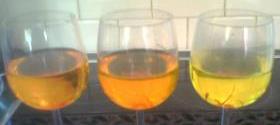
VANILLA
- World supply shortage.
- From $50/kg to $500/kg.
- Second most expensive spice in the world.
- The most fluctuating spice in price.
- Make your own Vanilla bean paste by simply warming 1 Tablespoon of glucose syrup and stirring in 1 teaspoon Vanilla bean powder.
- Can only be pollinated by one particular bee that is native to Mexico, and that is also nearly extinct.
- During a shortage, Coca Cola used 20% of the vanilla supply for Vanilla Coke!
- Curing vanilla is a complex process.
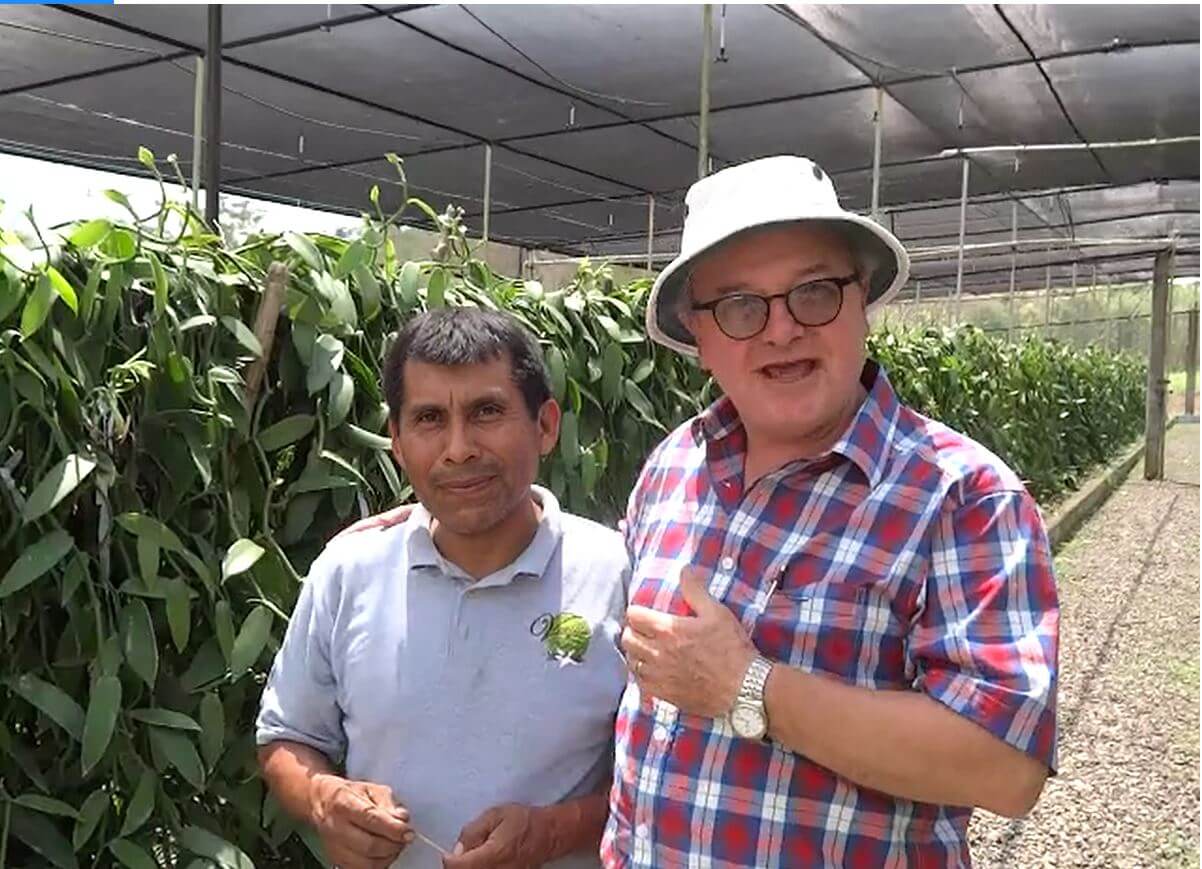
BLACK PEPPER
Sanskrit: Maricha
Botanical Name: Piper Nigrum (Piperaceae)
Black pepper is much more than your common kitchen spice. It is one of the most popular herbs in Ayurvedic medicine that provides powerful medicinal actions beyond being just a spicy ingredient.
Named after one of the names of the sun, Maricha, it possess the same qualities as this spherical source of heat and light. It is warming, drying and stimulating to the digestive, respiratory and circulatory systems.
Medicinal Uses:
- Digestion – stimulates agni (digestive fire), burns ama (undigested food material) relieves abdominal pain and helps remove parasites.
- Lungs – Specific for cold, wet, damp, kapha conditions in the respiratory channel.
- Circulation – stimulates the microcirculation in the capillaries and move stagnated blood
- Fever – Helps “cook” the pathogens and then induce a sweat. Clears ama.
Ayurvedic Properties
Rasa (taste) – Pungent, bitter
Virya (energy) – Hot
Vipaka (post-digestive effect) – Sweet
Guna (quality) – Light, dry, sharp
Dosha effect VK-, P+
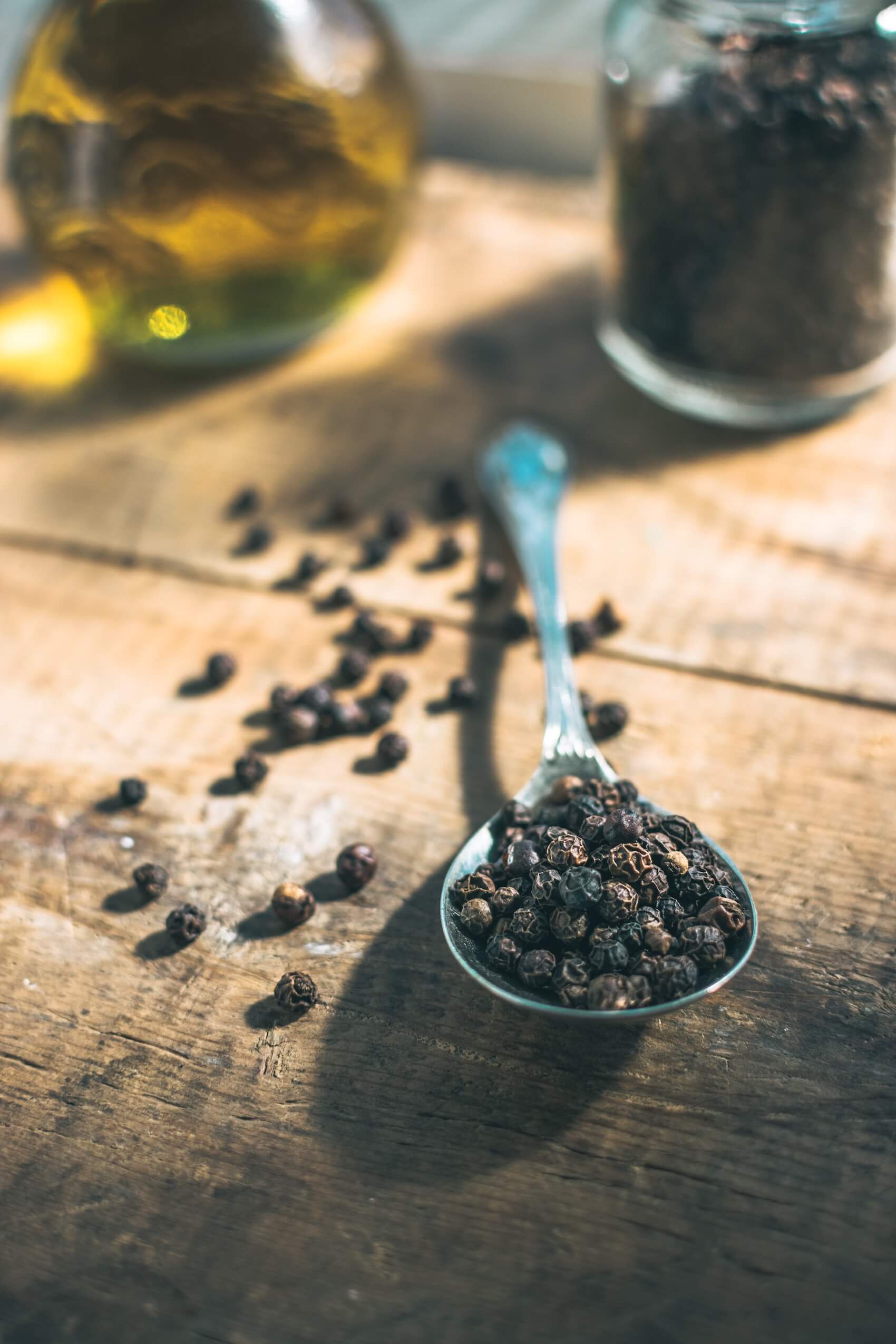
CARDAMOM
- Distinct camphorous, eucalyptus-like, pungent and astringent aroma.
- Perennial plant.
- Dried in the dark.
- One of Herbie’s favourite spices.
- When buying ground cardamom, make sure it is only the seeds ground, since a lot of ground cardamom has the husks still.
- Environmentally friendly to grow – since it grows in the shade in the rainforest, and doesn’t need to be irrigated.
Shortages of cardamom seeds
- The importation of seeds of any kind has become more difficult due to new Australian bio-security regulations introduced recently. October 2019.
- That combined with low harvests in India (Herbie’s source) and Guatemala (another major producer) you may have to stock up on whole green cardamom pods, and peel the husk away to avail yourself of the seeds as you need them.
- That’s what Herbies is doing in order to continue to include ground cardamom in retail packs.
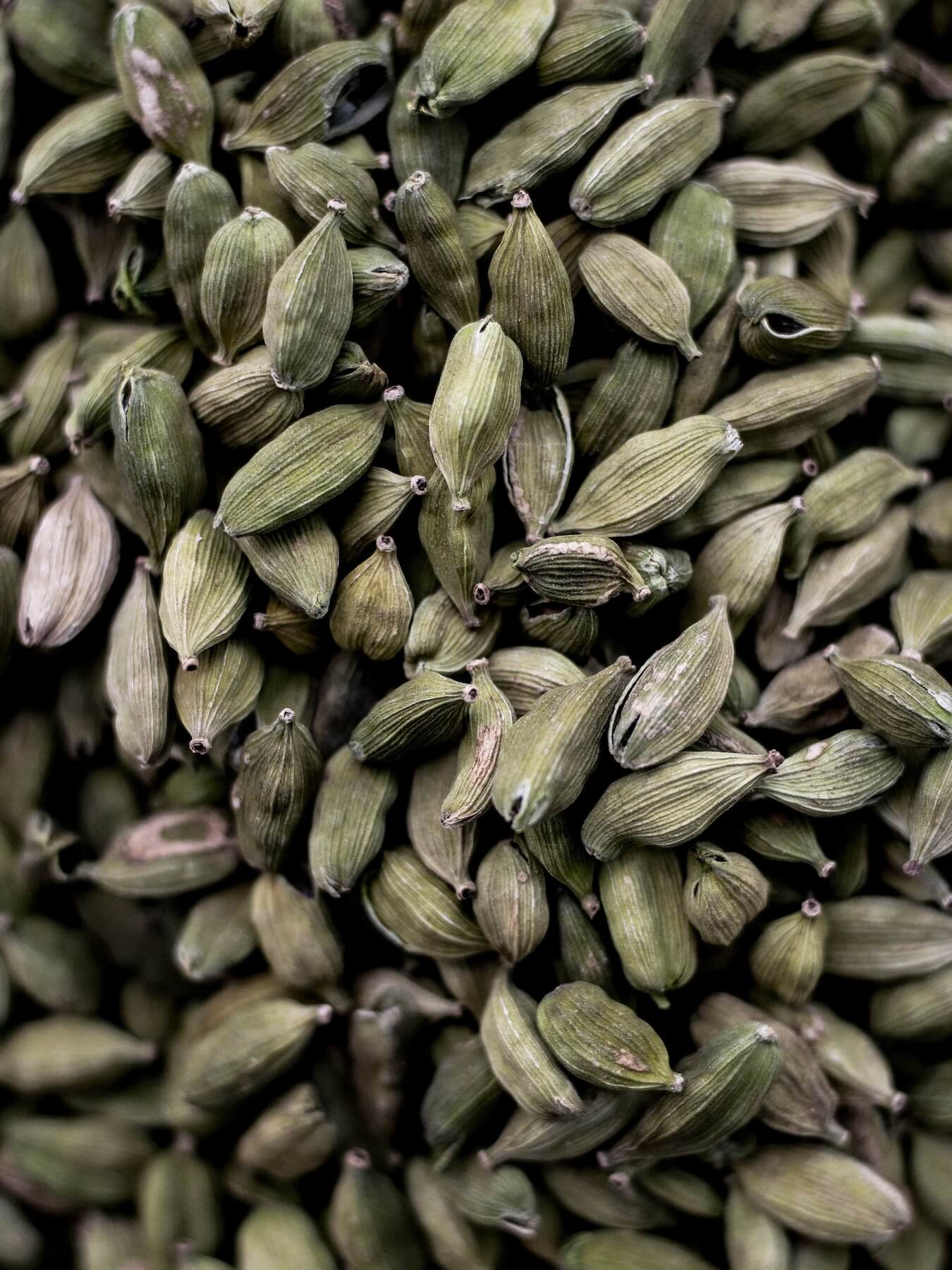
Elādwaya (Elettaria Cardamomum) / (Green Cardamom)
Sanskrit synonym: Suksmaila
Rasa (taste) – katu and madhura. (pungent and sweet)
Virya (energy) – Sita (cooling)
Vipaka (post-digestive effect) – Madhura (sweet)
Guna (qualities) – laghu, ruksa (light, dry).
Doshas: KV-
Karma (action):
- Pitta vata hara
- Pitta hara due to sita virya
- Vatahara due to madhura vipaka.
- Swasa, Kasa (Asthma, dyspnoea)
- Arsa (Piles)
- Dysuria
Sthūla Ela (amomum subulatum) / (Black Cardamom)
Krsna Ela (Black Cardamom) has a very strong odor and camphor like quality.
Rasa (taste) – katu and slightly madhura. (pungent and sweet)
Virya (energy) – Usna (heating)
Vipaka (post-digestive effect) – katu (pungent)
Guna (qualities) – laghu, ruksa (light, dry).
Doshas: KP- and Rakta- (pacifies blood)
Karma (action):
- Vatakapha hara – Kapha hara due to usna virya and katu vipaka.
- Deepana (enkindles agni)
- Itching, thirst, nausea, poison, diseases of mutravaha (urinary tract)
- Swasa, kasa, vomiting, headache.
TURMERIC
Turmeric in the Spice Industry
- Fresh vs dry – Dry is more potent, with the active ingredients concentrated. More pure.
- Easy to grow, but hard to get a good quality.
- Extracts vs. Whole herbs – always go with whole herbs.
2 types of Turmeric:
- Madras turmeric – from Tamil Nadu. More light yellow in colour.
- Allepy turmeric – much darker in colour. Higher curcumin content, a more superior fresh turmeric flavour. More unctuous due higher cur cumin content.
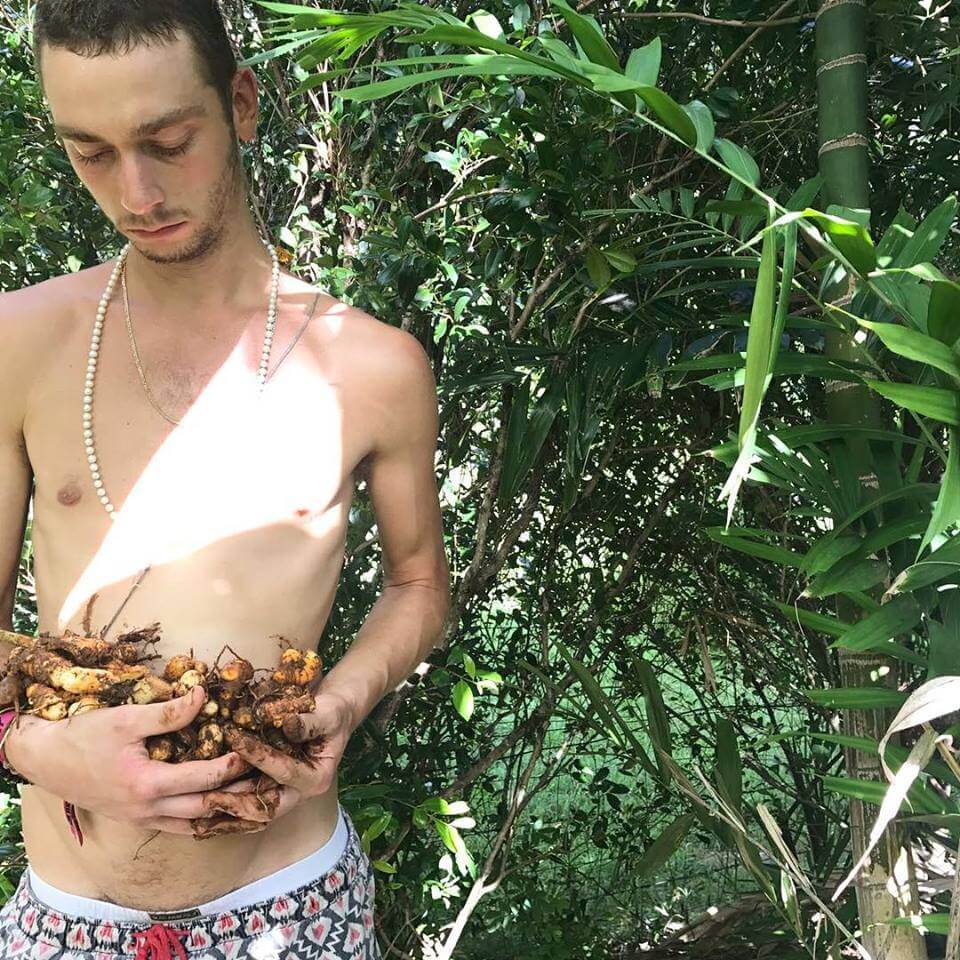
Medicinal Benefits of Turmeric
Turmeric (Curcuma Longa) is the most thoroughly researched plant on this planet!
And I don’t blame the scientists for the 5600 peer-reviewed and published biomedical studies.
Check out the medicinal benefits and Ayurvedic perspective of turmeric HERE.
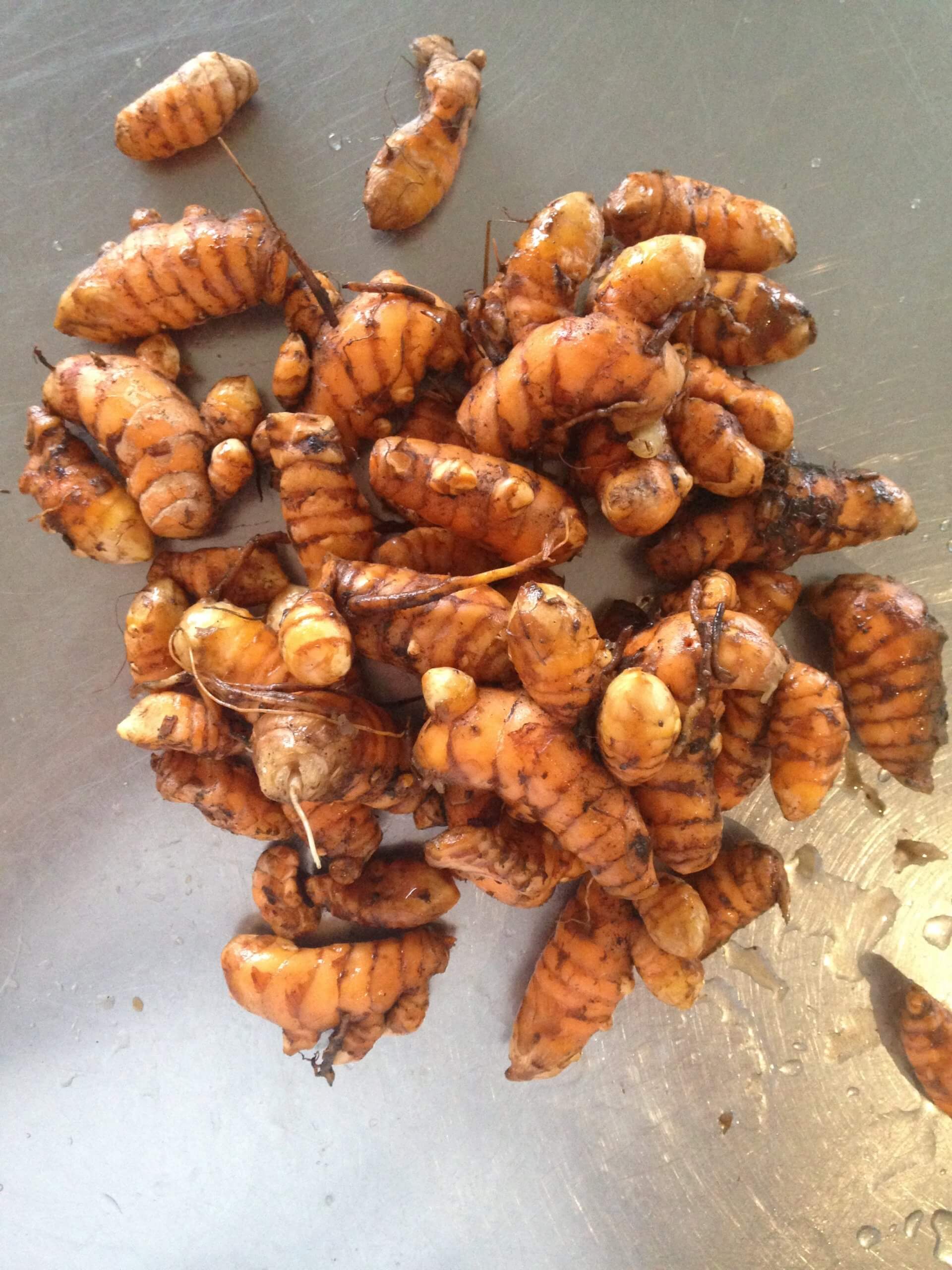
Native Australian Herbs and Spices
Australian Native Pepperberry (Tasmannia lanceolata)
Chilli
- Didn’t come from Asia.
- The pungent aroma of chilli and its hot, sinus-clearing, throat-searing substance called capsaicin permeated the air at India’s famous chilli market in Guntur, the largest chilli market in the world.
- 50 acres dedicated to just the market!
- Hundreds of tons of chillis.
- Make sure they are fully dried to avoid mould. Dry to around 12% moisture content.
- The sugar caramelises when you dry them to create a rich, robust and quite complex flavour.
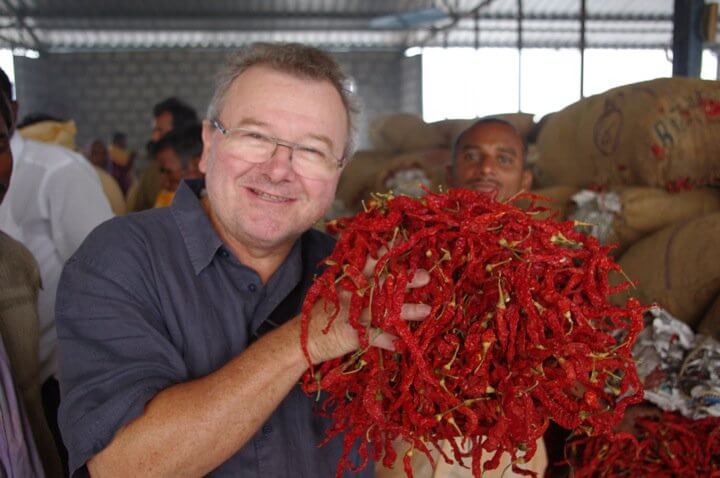
Pink pepper corns (Schinus molle)
In this podcast, Herbie mentioned it has a toxin in it. While this toxin may be present, I still forage pink pepper corns from the trees growing around the suburbs of Sydney and Melbourne.
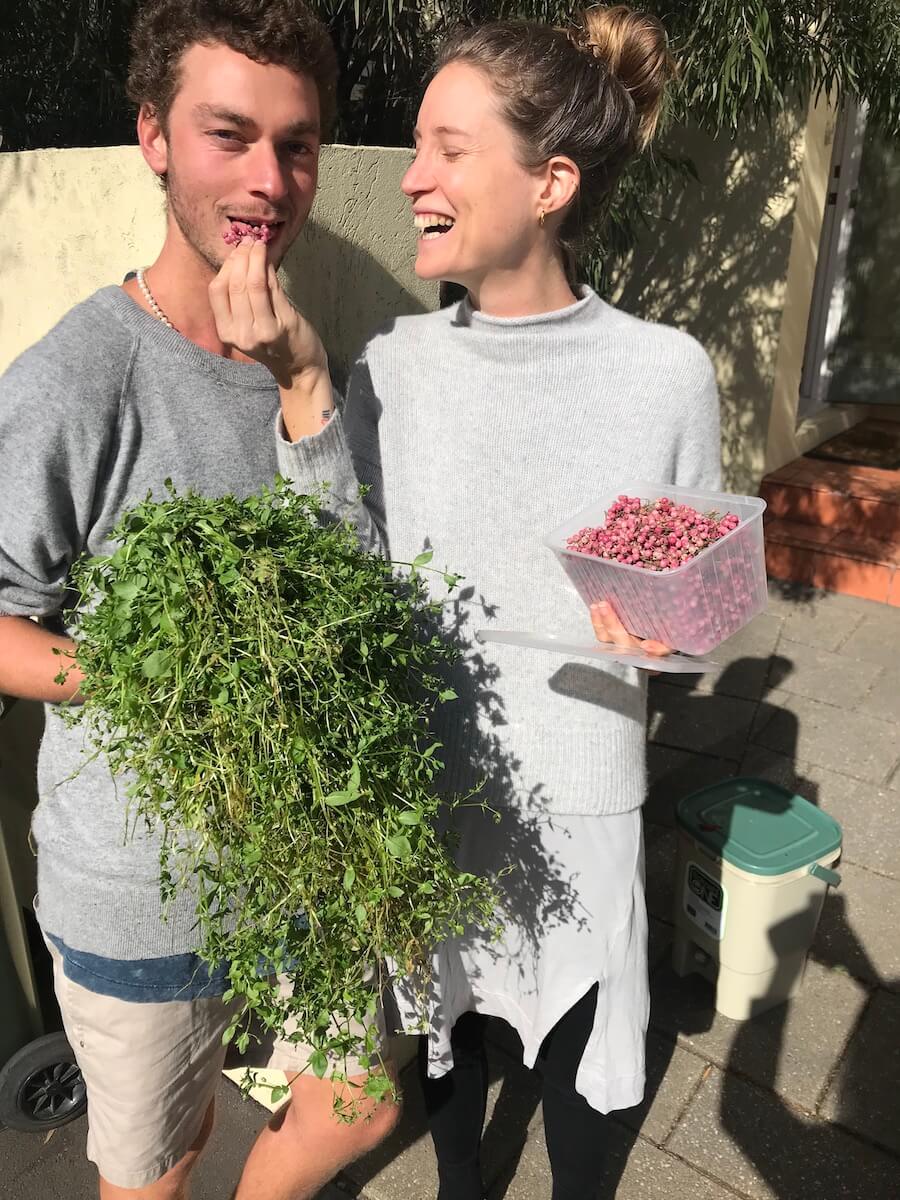
RESOURCES
Check out the Spice Tours that Herbies run in India.
SUPPORT THE SHOW
Please leave me a comment below (I love to read every single one).

